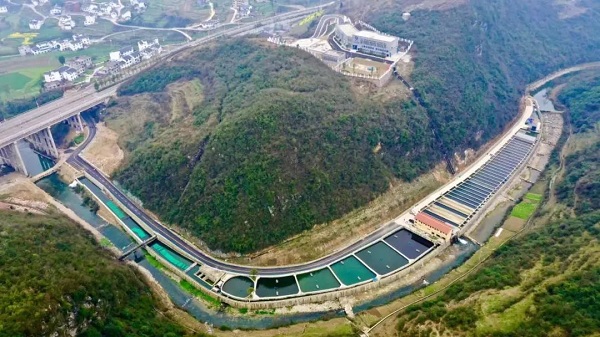Ecological fisheries brings wealth to villagers

An aerial view of a fish breeding base adhering to an ecological fishery development model in Xiaobao village, Xifeng county, Guiyang, Southwest China's Guizhou province. [Photo/xifeng.gov.cn]
Wujiang River is the largest river crossing through Guizhou and one of the biggest tributaries of the Yangtze River with a total length of 1,050 kilometers. Xifeng county has been tasked with the mission of protecting the environment in the upper reaches of the Yangtze River.
Before 2017, net-cage culture was a dominant approach to raising fish – villagers kept fish in box-shaped closed nets placed in the river. Aquatic products produced through this approach accounted for more than 95 percent of the county's total.
The approach brought wealth to the village, but not in a sustainable way. The disorderly expansion of this breeding model had deteriorated the Wujiang River, and the ecosystem was at stake.
By the end of 2017, all net cages placed in the river had been removed by the government after an inspection team from the central government visited the county and gave the order out of environmental concern.
Saying goodbye to the traditional fish breeding approach brought about new opportunities for villagers who then shifted their focus to the ecological fishery model.
At new fish breeding bases, water flows in a circular pattern, and special equipment installed in the pond collects pollutants from the water, which are then processed collectively.
"We mainly raise perches. We use water from natural mountain springs, all the feed is purchased from licensed manufacturers, and the whole feeding process has been rendered traceable," said Hu Yixu, a manager at a local agriculture company.
At the end of last year, Xifeng was home to 19 ecological fishery operators and registered an aquatic product output of 1,634 metric tons.
Presented by China Daily.
黔ICP备05001922号-3
